Think broad shoulders are just for bodybuilders? Think again. Whether you’re an athlete, a fitness enthusiast, or someone who simply wants to look more sculpted in a T-shirt, well-developed shoulders can completely transform your upper body.
And the best part? You don’t need a gym full of machines — just a pair of dumbbells and the right moves.
Did you know? The shoulder is the most mobile joint in your body — and also one of the most injury-prone. That’s why building strength, stability, and balance in all three heads of the deltoid muscle is critical.
Let’s dive into 10 highly effective dumbbell exercises to sculpt, strengthen, and stabilize your shoulders.
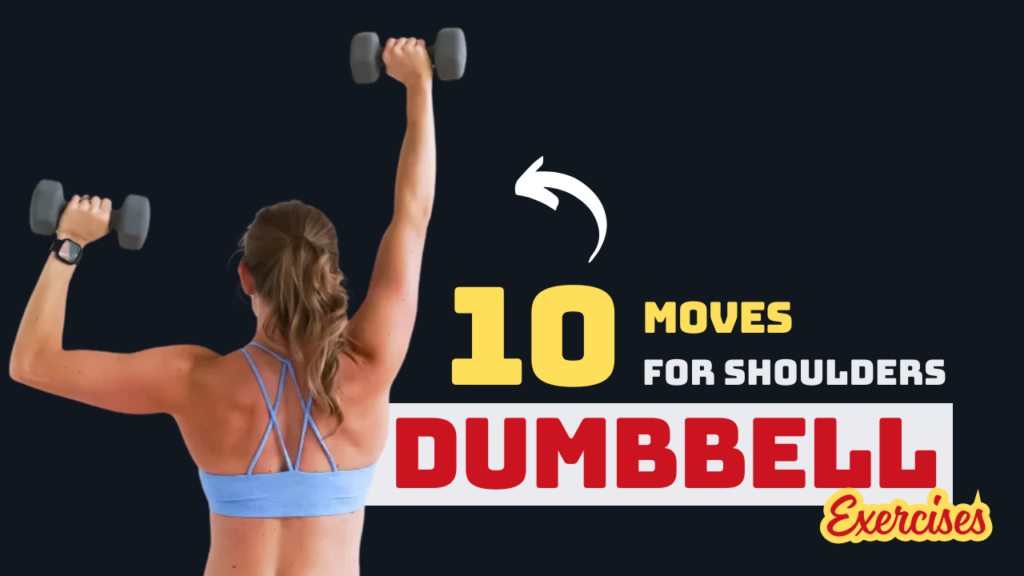
Table of Contents
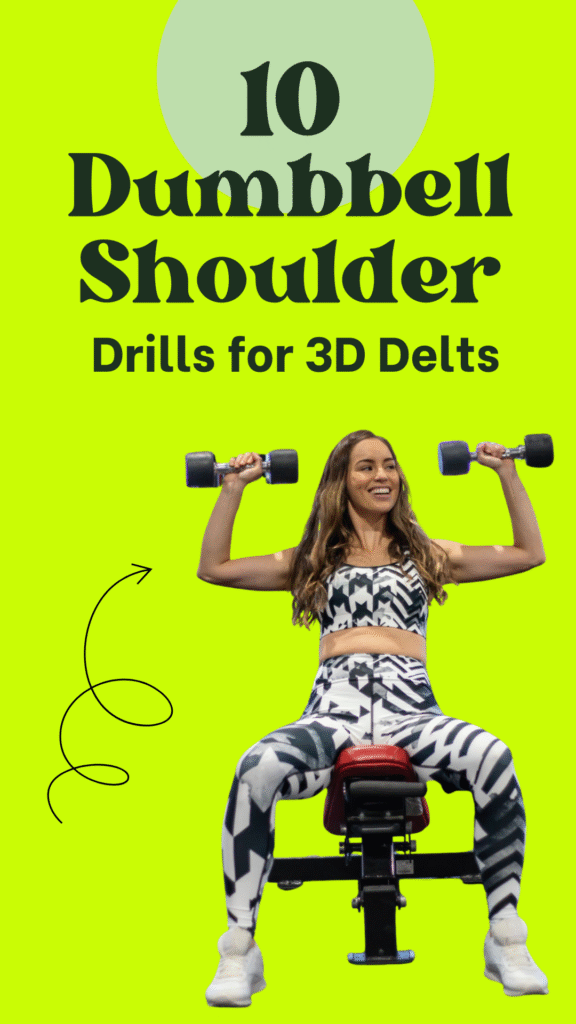
What Can Happen After 30 Days of These Shoulder Dumbbell Exercises
| Timeline (30 Days) | Possible Results |
|---|---|
| Week 1–2 | – Improved shoulder mobility and activation – Better mind-muscle connection – Reduced stiffness and shoulder discomfort |
| Week 2–3 | – Noticeable increase in shoulder endurance – Improved posture and upper body alignment – Slight shape and muscle definition forming |
| Week 4 | – Visible toning and definition in deltoids – Stronger lifts in other upper body exercises – More balanced and symmetrical shoulders – Enhanced confidence in physical appearance |
Also Read: 11 Dumbbell Back Workouts for a Stronger, V-Tapered Physique
Do’s and Don’ts of Dumbbell Shoulder Workouts
| Do’s | Don’ts |
|---|---|
| Warm up your shoulders before every workout | Don’t lift heavy without mastering your form |
| Focus on slow, controlled movements | Don’t use momentum or swing the weights |
| Engage your core during overhead lifts | Don’t arch your back excessively |
| Train all 3 heads of the deltoid (front, side, rear) | Don’t neglect rear delts or overtrain just one area |
| Use progressive overload for long-term growth | Don’t stick to the same weights forever |
| Rest 48 hours before training shoulders again | Don’t train shoulders daily — they need recovery |
| Start with compound lifts, end with isolation | Don’t begin your workout with high-rep burnout sets |
| Prioritize form over ego-lifting | Don’t compromise posture for heavier weights |
| Incorporate variety (presses, raises, flys) | Don’t repeat the same routine for weeks on end |
| Cool down and stretch post-workout | Don’t skip post-workout recovery steps |
1. Dumbbell Shoulder Press
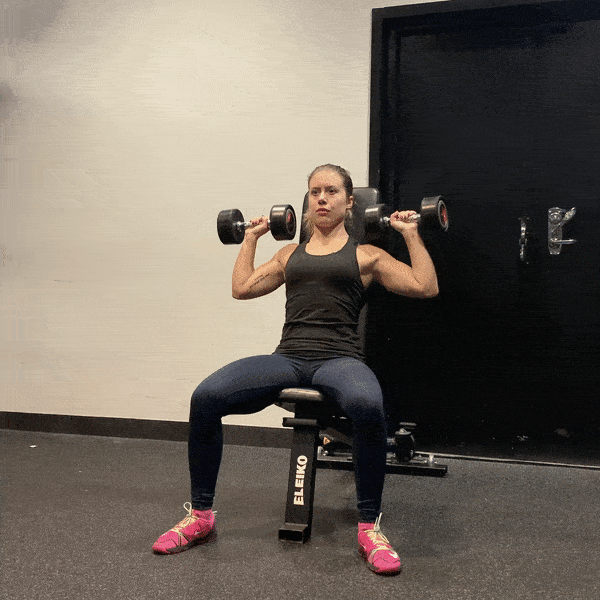
Target: Front and side delts, triceps
How to Do It:
- Sit or stand with a dumbbell in each hand at shoulder height.
- Press both dumbbells overhead until your arms are fully extended.
- Slowly lower them back to the starting position.
Pro Tip: Keep your core tight and avoid arching your back.
2. Lateral Raise
Target: Lateral (side) delts
How to Do It:

- Stand tall holding dumbbells at your sides.
- With a slight bend in your elbows, raise the dumbbells out to the sides until they’re at shoulder level.
- Lower slowly.
Interesting Fact: This is one of the best moves for giving your shoulders that “capped” look.
Also Read: 15 Gym-Based Lower Back Exercises to Build Strength & Prevent Injury
3. Front Raise
Target: Anterior deltoids
How to Do It:

- Hold dumbbells in front of your thighs with palms facing your body.
- Raise one or both arms straight in front of you to shoulder level.
- Lower slowly.
Variation Tip: Try alternating arms for more focus and control.
4. Bent-Over Reverse Fly
Target: Rear delts, upper back
How to Do It:

- Hinge forward at the hips with a dumbbell in each hand, arms hanging down.
- With a slight bend in your elbows, raise your arms out to the sides.
- Squeeze your shoulder blades at the top, then lower slowly.
Common Myth Busted: Rear delts are often neglected — but skipping them leads to poor posture and imbalance.
5. Arnold Press
Target: All three deltoid heads
How to Do It:
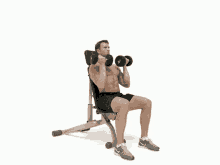
- Start with dumbbells in front of your shoulders, palms facing your body.
- Rotate your wrists as you press the weights overhead.
- Reverse the movement to return to the start.
Fun Fact: Named after Arnold Schwarzenegger — it’s a shoulder-builder he swore by.
Also Read: 13 Game-Changing Equipment-Based Abs Exercises to Torch Belly Fat
6. Dumbbell Upright Row
Target: Lateral delts and traps
How to Do It:
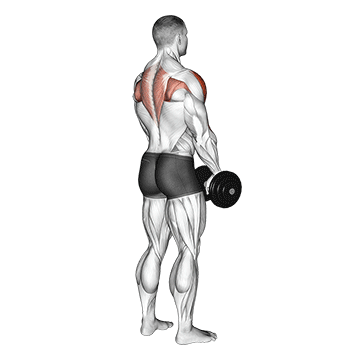
- Hold dumbbells in front of your thighs, palms facing you.
- Pull them straight up toward your chin, keeping elbows higher than your wrists.
- Lower slowly.
Caution: Avoid using heavy weights to protect your shoulder joints.
7. Dumbbell Shrugs
Target: Trapezius
How to Do It:
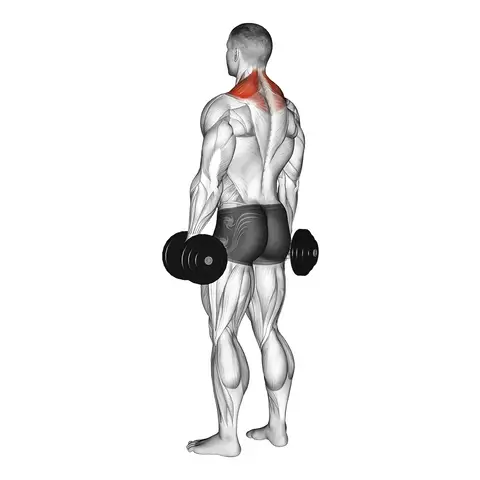
- Hold dumbbells at your sides.
- Shrug your shoulders up as high as possible.
- Squeeze at the top, then slowly lower.
Benefit: Strong traps support your shoulders and improve posture.
8. Dumbbell Y-Raise
Target: Rear and side delts
How to Do It:
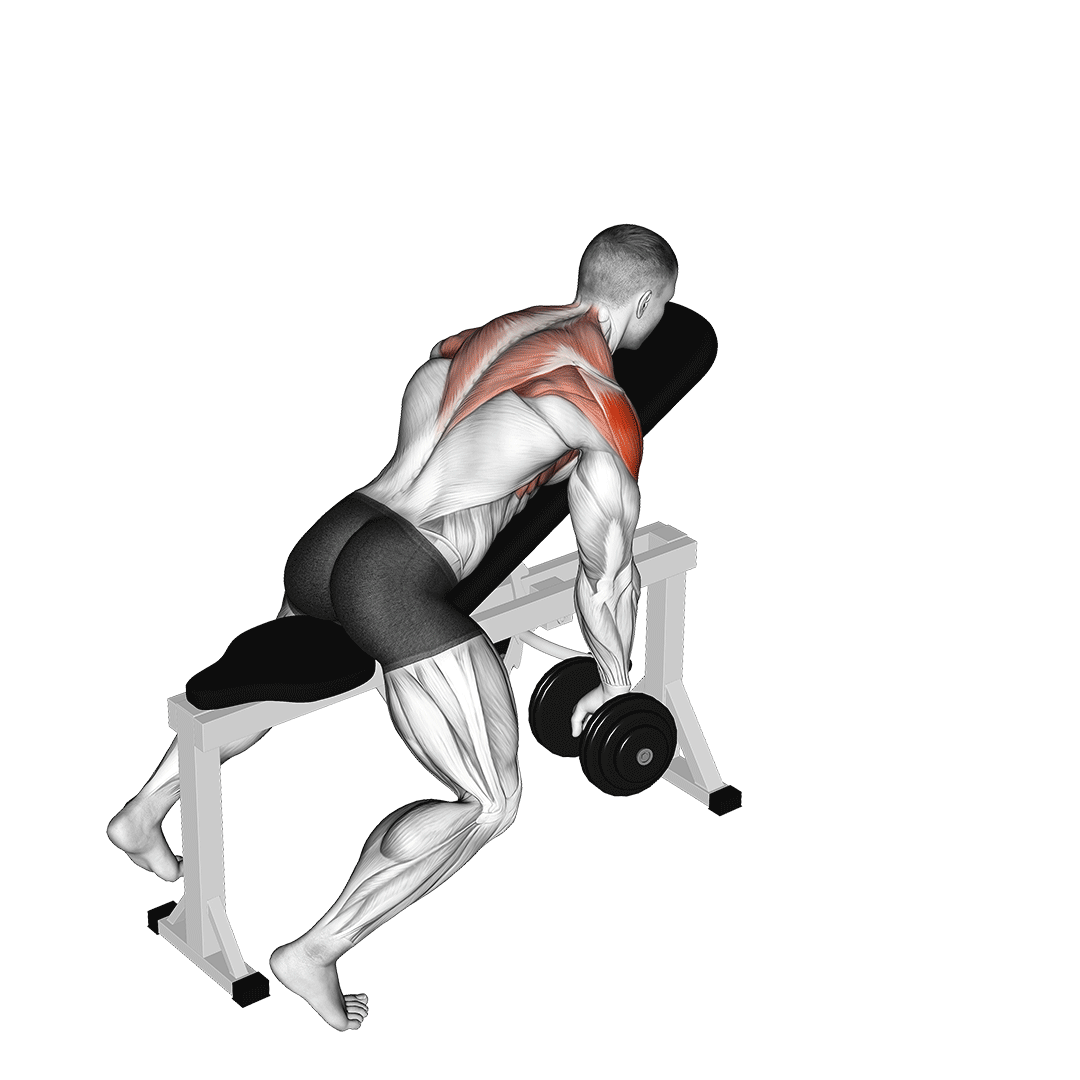
- Bend forward slightly with dumbbells hanging down.
- Raise arms in a “Y” shape to shoulder height.
- Lower under control.
Unique Variation: Do it on an incline bench to isolate the shoulders further.
Also Read: 14 Ultimate Bodyweight Back Exercises That’ll Boost Posture & Power
9. Single-Arm Overhead Press
Target: Delts, core stability
How to Do It:
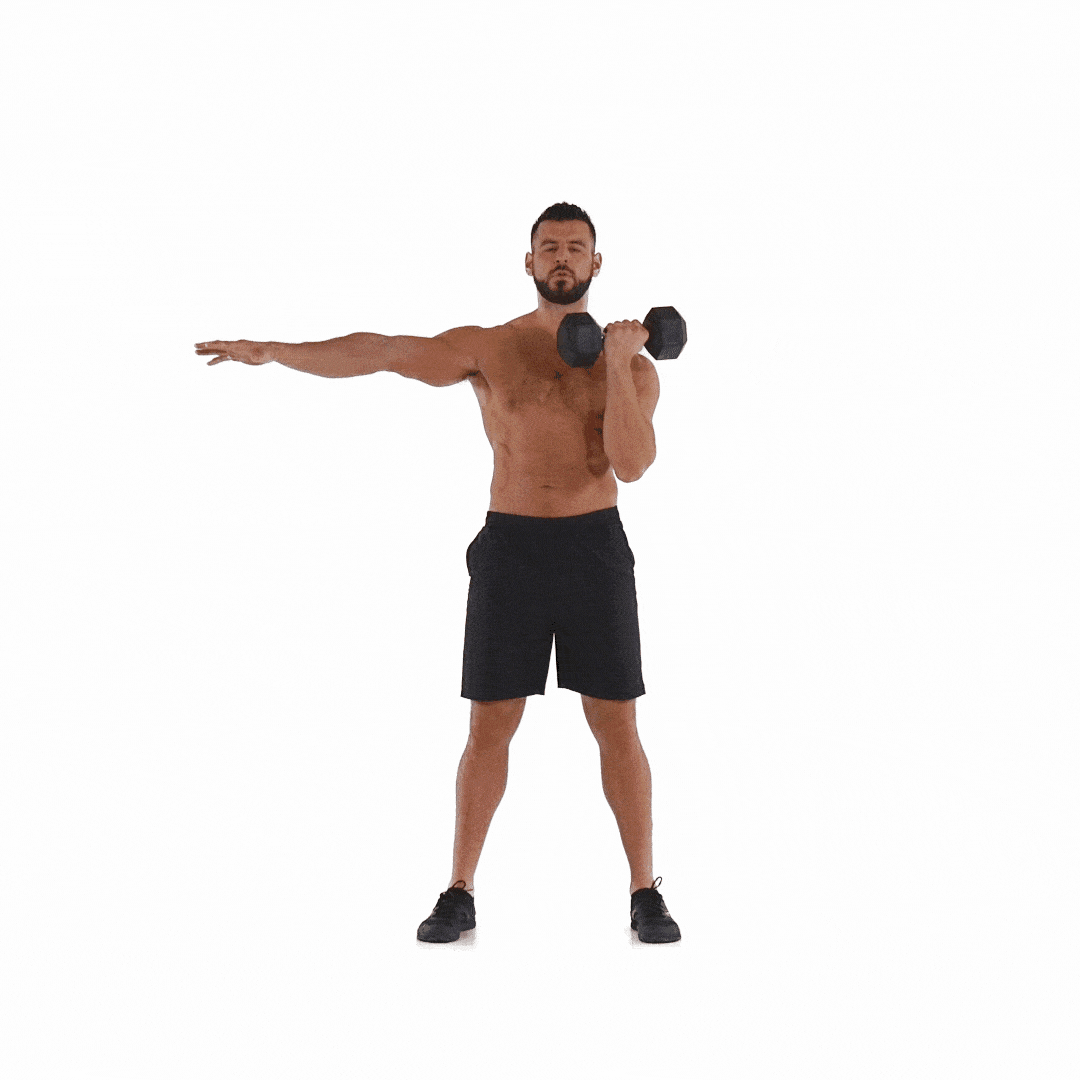
- Hold one dumbbell at shoulder level.
- Press it overhead while keeping your torso stable.
- Repeat on the other side.
Why It’s Great: Engages your core to prevent tilting — a true stability test.
10. Z-Press
Target: Shoulders and core
How to Do It:
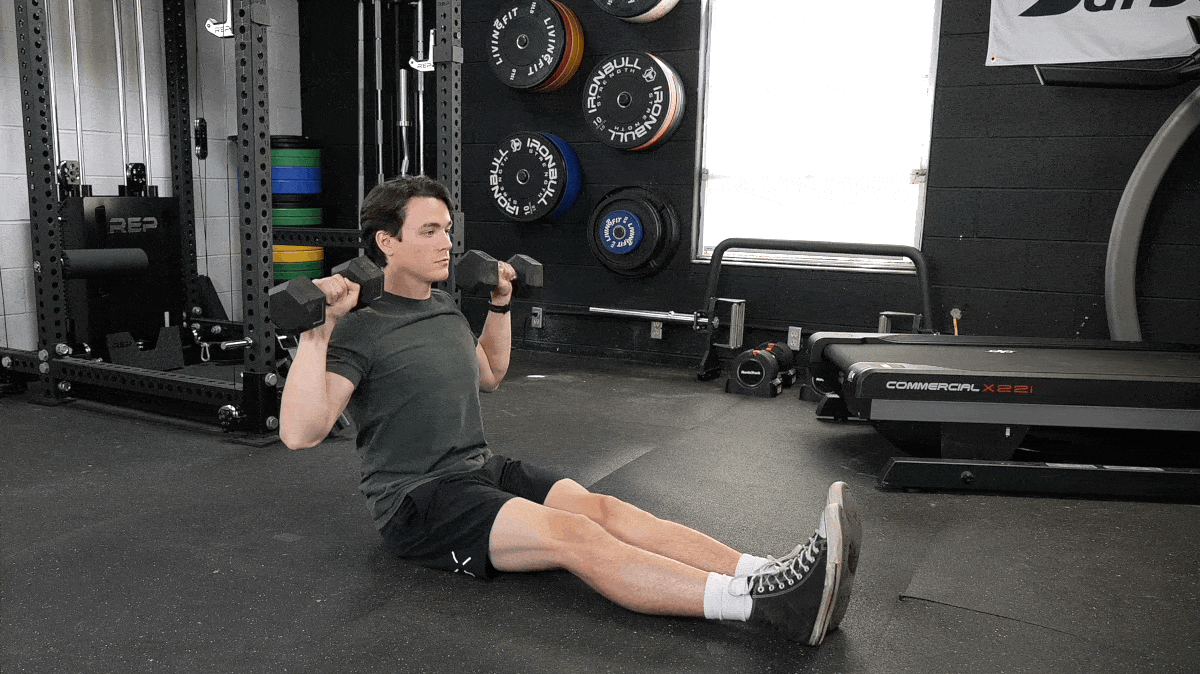
- Sit on the floor with your legs extended forward.
- Hold dumbbells at shoulder height.
- Press overhead without leaning back.
Challenge: No leg drive here — pure shoulder and core engagement.
Benefits of Dumbbell Shoulder Training
- Balanced Muscle Growth: Targets all three deltoid heads (anterior, lateral, posterior).
- Joint Stability: Strengthens rotator cuff and improves shoulder health.
- Postural Support: Strong shoulders contribute to an upright, confident posture.
- Increased Upper Body Strength: Carries over to pushing, pulling, and lifting motions.
- More Aesthetic Physique: Creates a “V-tapered” upper body look.
Tips to Maximize Your Shoulder Workouts
- Warm-up with dynamic stretches and light mobility drills.
- Start with compound movements (like presses) before isolation work (like raises).
- Control the movement — don’t swing or rush reps.
- Allow adequate rest between shoulder days for recovery and growth.
Also Read: 10 Equipment-Based Back Exercises to Sculpt a V-Taper
Closing Thought
Your shoulders are more than just muscle — they’re the foundation of upper body performance. Whether you’re reaching, lifting, or training for aesthetics, strengthening your delts with dumbbells is simple, effective, and incredibly rewarding.
So next time you pick up those dumbbells, know you’re not just chasing looks — you’re building power, stability, and function from the top down.
Frequently Asked Questions (FAQs)
How many times a week should I train my shoulders with dumbbells?
You can train shoulders 1–2 times per week, allowing at least 48 hours of rest between sessions. Recovery is key for muscle growth and joint health.
Can I build big shoulders using only dumbbells?
Yes. Dumbbells provide a wide range of motion, muscle activation, and variation to target all three deltoid heads — which is essential for building size and shape.
Are dumbbell shoulder exercises suitable for beginners?
Absolutely. Start with lighter weights and focus on form. Exercises like the shoulder press and lateral raise are beginner-friendly and easy to progress over time.
How many sets and reps should I do for shoulder definition?
Aim for 3–4 sets of 10–15 reps per exercise. This range supports muscle endurance and definition while minimizing joint stress.
What weight dumbbells should I use for shoulder workouts?
Start with moderate weights that allow you to perform all reps with good form. For pressing movements, go slightly heavier; for isolation moves (like raises), go lighter.
Can dumbbell shoulder workouts help improve posture?
Yes. Strengthening the shoulders — especially the rear delts and traps — helps pull the shoulders back, combatting forward slouching and improving posture.
Is it okay to do shoulder exercises at home with limited equipment?
Definitely. All 10 exercises in this post can be done at home with a pair of dumbbells and enough space to move safely.
What should I do if I feel shoulder pain during these exercises?
Stop immediately and reassess your form. If the pain persists, consult a medical or fitness professional. Avoid exercises that cause discomfort.
How long does it take to see visible results in shoulder shape?
With consistent training, good nutrition, and rest, noticeable definition can appear in as little as 4–6 weeks.
Can I combine these exercises with other upper body workouts?
Yes, but be strategic. Either dedicate a session to shoulders or combine with chest or back routines, ensuring enough volume and rest between muscle groups.










